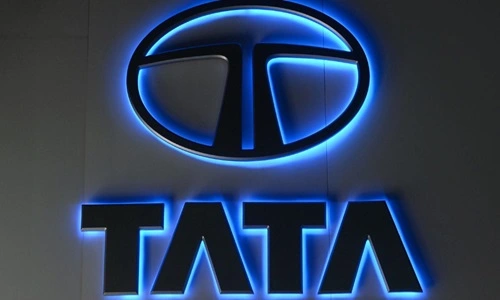The Tata Group, one of India’s oldest and largest conglomerates, operates in over 100 countries across diverse industries, including steel, automobiles, information technology, hospitality, telecommunications, and consumer goods. Founded in 1868 by Jamsetji Tata, the group has become a symbol of Indian industrial prowess and ethical business practices. Known for its commitment to social responsibility, innovation, and growth, Tata Group has been a crucial driver of India’s economic development. This SWOT (Strengths, Weaknesses, Opportunities, Threats) analysis explores the Tata Group’s current standing and provides insights into its future potential.

Strengths
1. Strong Brand Legacy and Trust:
With a history spanning over 150 years, Tata is a household name in India, and it commands substantial respect worldwide. The Tata brand is synonymous with trust, ethics, and quality, giving it a significant advantage over competitors. Tata’s commitment to social causes through the Tata Trusts, which holds a majority stake in the group’s main holding company, reinforces its brand value and helps build goodwill.
2. Diversified Business Portfolio:
Tata Group operates across numerous sectors, including steel (Tata Steel), automobiles (Tata Motors), information technology (Tata Consultancy Services), telecommunications (Tata Communications), and hospitality (Taj Hotels). This diversification reduces the group’s dependency on any single industry, providing stability and resilience against market fluctuations. Tata’s wide-ranging portfolio has enabled it to offset losses in struggling sectors with gains in others, enhancing financial sustainability.
3. Market Leadership in Key Sectors:
Tata Group holds leading positions in several sectors. Tata Consultancy Services (TCS) is one of the world’s largest IT services companies, Tata Steel is among the top steel manufacturers globally, and Tata Motors is a dominant player in India’s automotive sector. This leadership in key sectors strengthens Tata’s market position, contributing significantly to its revenue and market share.
4. Commitment to Innovation and Sustainability:
Tata Group has invested heavily in innovation and R&D, particularly through TCS, which has been at the forefront of digital transformation. Tata is also known for its focus on sustainable practices, with various initiatives to reduce carbon emissions and improve environmental impact across its businesses. Its sustainability goals align with global trends, enhancing its appeal to environmentally conscious consumers and investors.
Weaknesses
1. High Dependency on the Indian Market:
While Tata Group has an extensive global footprint, it remains heavily reliant on the Indian market for its core business operations and revenues. This dependence exposes the group to risks related to the Indian economy, such as regulatory changes, economic slowdowns, and fluctuations in consumer demand. Strengthening its international presence could help Tata reduce this dependency and spread its risks across diverse markets.
2. Financial Strain from Debt and Underperforming Units:
Certain Tata Group companies, like Tata Steel and Tata Motors, have significant debt levels due to capital-intensive projects, acquisitions, and expansions. Tata Steel’s European operations and Tata Motors’ international ventures, including Jaguar Land Rover (JLR), have struggled with profitability in recent years, impacting the group’s overall financial stability. High debt burdens can restrict Tata’s ability to invest in new ventures or expand existing ones, making it critical to improve the performance of these units.
3. Complex Organizational Structure:
Tata Group’s sprawling business structure, with over 100 companies under its umbrella, presents challenges in terms of coordination and operational efficiency. The group’s decentralized structure often results in duplication of efforts, and decision-making can be slow due to the involvement of multiple stakeholders. Streamlining its organizational structure could improve operational efficiency and enable Tata to respond more effectively to market changes.
4. Limited Success in Consumer-Facing Segments:
While Tata Group is a strong player in sectors like IT and steel, it has had mixed results in consumer-facing segments like retail and e-commerce. The recent acquisition of BigBasket and investments in digital initiatives aim to improve Tata’s presence in these segments, but Tata remains behind other competitors, such as Reliance Retail, in establishing a stronghold in consumer-facing businesses.
Opportunities
1. Growth in Digital Transformation and Technology Services:
The digital revolution offers Tata Group significant opportunities, particularly through TCS, its crown jewel. With global businesses undergoing digital transformation, TCS can continue to capture substantial growth in areas like artificial intelligence, cloud computing, and cybersecurity. Tata’s recent foray into the consumer internet segment with the Tata Neu super app reflects the group’s intent to consolidate its digital presence and expand its consumer base in India’s burgeoning e-commerce market.
2. Expansion in Electric Vehicles and Clean Energy:
With Tata Motors and Tata Power, the group is well-positioned to capitalize on the shift toward electric vehicles (EVs) and renewable energy. Tata Motors has launched a range of electric cars, including the Nexon EV, which has seen robust sales in India. Tata Power, on the other hand, is investing in renewable energy sources, such as solar and wind, aligning with India’s sustainability goals. The growing EV market and increasing demand for clean energy present substantial growth potential for Tata Group.
3. International Market Expansion:
Tata Group’s established brands, like TCS and Jaguar Land Rover, provide a foundation for expansion in international markets. While TCS is already a global leader, Tata can further penetrate emerging markets like Southeast Asia, the Middle East, and Africa, where demand for affordable vehicles, IT services, and industrial goods is growing. Expanding its international footprint can help Tata diversify its revenue base and reduce its dependence on the Indian market.
4. Increasing Consumer Preference for Sustainable Products:
With sustainability becoming a priority for consumers, Tata’s focus on eco-friendly initiatives across sectors can be leveraged to attract environmentally conscious customers. Tata’s products, such as Tata Salt, Tata Tea, and Tata Consumer Products, can capitalize on this trend by emphasizing sustainable sourcing, packaging, and ethical practices, giving the brand an edge in consumer goods.
Threats
1. Intense Competition in Key Markets:
Tata Group faces intense competition across its businesses. In telecom, Tata Communications competes with giants like Reliance Jio and Airtel. In automobiles, Tata Motors faces stiff competition from Maruti Suzuki and Hyundai. In the consumer goods segment, Tata Consumer Products must contend with Hindustan Unilever and Nestlé. This fierce competition requires Tata to continually innovate and invest in marketing to maintain its market share.
2. Regulatory and Political Risks:
Tata Group operates in industries that are subject to frequent regulatory changes, including environmental standards, tax policies, and labor laws. For instance, regulatory changes in the automotive sector concerning emissions standards or subsidies for electric vehicles can affect Tata Motors’ operations. Additionally, Tata’s global operations expose it to political risks, particularly in volatile regions where the group has business interests.
3. Economic Slowdown and Currency Fluctuations:
Tata Group’s global operations make it vulnerable to currency fluctuations and economic downturns in different regions. The COVID-19 pandemic, for instance, led to a slowdown in the automotive and steel industries, affecting Tata Motors and Tata Steel. Economic downturns or fluctuations in exchange rates can significantly impact Tata’s profitability, particularly in capital-intensive segments.
4. Supply Chain and Raw Material Costs:
Tata’s industrial operations, such as Tata Steel and Tata Motors, depend heavily on raw materials like iron ore, coal, and metals. Fluctuations in raw material prices or disruptions in the supply chain can adversely affect profitability. Global supply chain issues, heightened by events like the COVID-19 pandemic, have highlighted vulnerabilities in the supply chain and the need for effective risk management.
Future Outlook
The future outlook for Tata Group is promising, backed by its strong brand, diversified portfolio, and commitment to innovation and sustainability. Tata’s focus on digital transformation, especially through TCS and its newly launched Tata Neu app, positions it to capture the growing digital consumer market. The success of Tata Neu, along with investments in e-commerce and online retail through BigBasket, will play a pivotal role in determining Tata’s future in consumer-facing businesses.
Tata Motors’ emphasis on electric vehicles, combined with Tata Power’s renewable energy initiatives, aligns well with India’s push for sustainability and green energy. These sectors are likely to see substantial growth in the coming years, positioning Tata as a leader in India’s EV and renewable energy markets. The group’s continued investment in clean energy also enhances its brand as a socially responsible conglomerate.
However, to capitalize on these opportunities, Tata Group must address its high debt levels and underperforming units like Tata Steel Europe and Jaguar Land Rover. Rationalizing its complex organizational structure and optimizing operational efficiency will be essential to maintain financial stability and allocate resources to high-growth areas. Additionally, expanding its international footprint will help Tata diversify risks and reduce its reliance on the Indian market, creating a more balanced revenue stream.
In conclusion, Tata Group’s strengths in brand value, market leadership, and diversification provide a solid foundation for sustained growth. By addressing its weaknesses and adapting to the rapidly evolving market landscape, Tata can continue to thrive as a leader in India’s industrial sector while enhancing its global standing. With a clear focus on digital transformation, sustainability, and operational efficiency, Tata Group is well-positioned to shape the future of Indian business and remain an influential player on the global stage.

